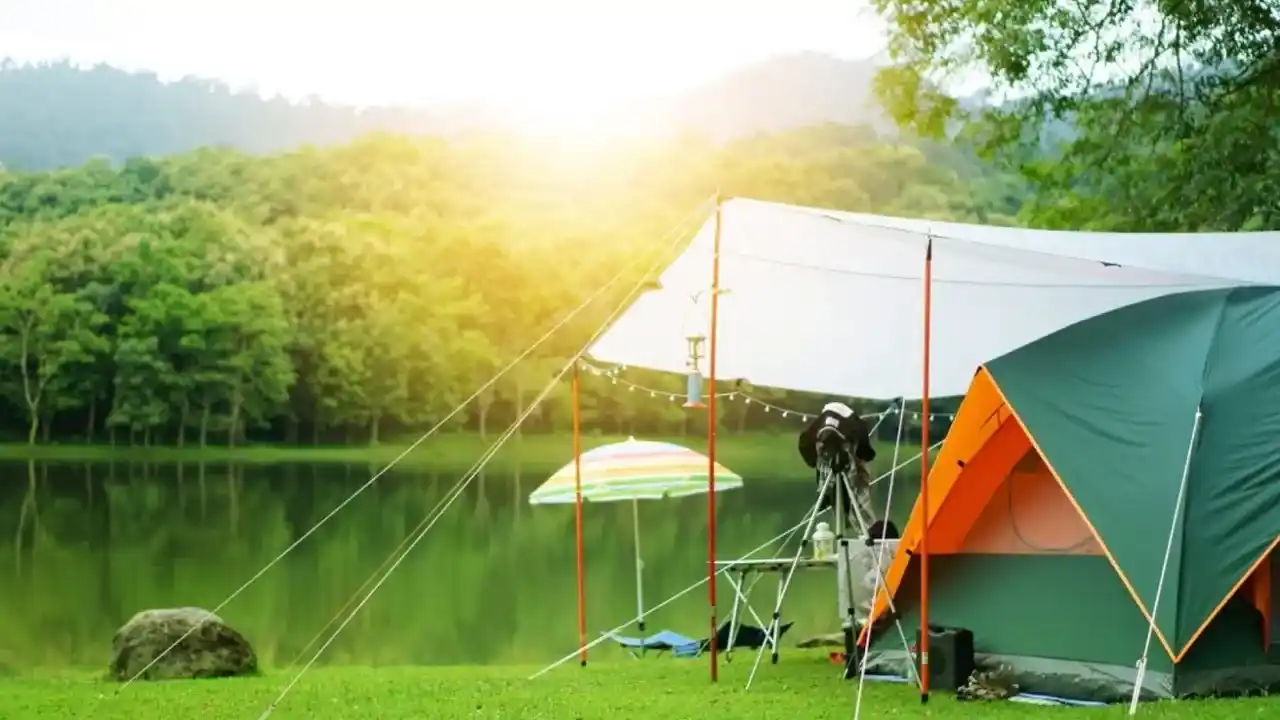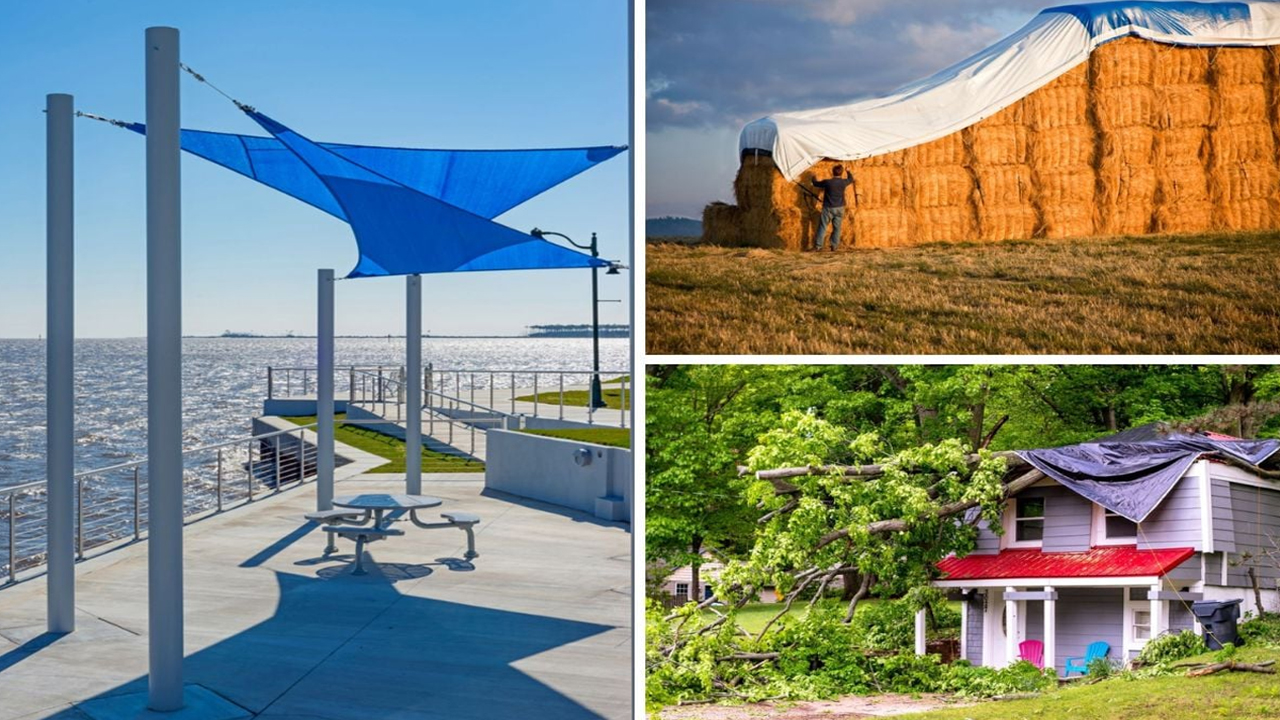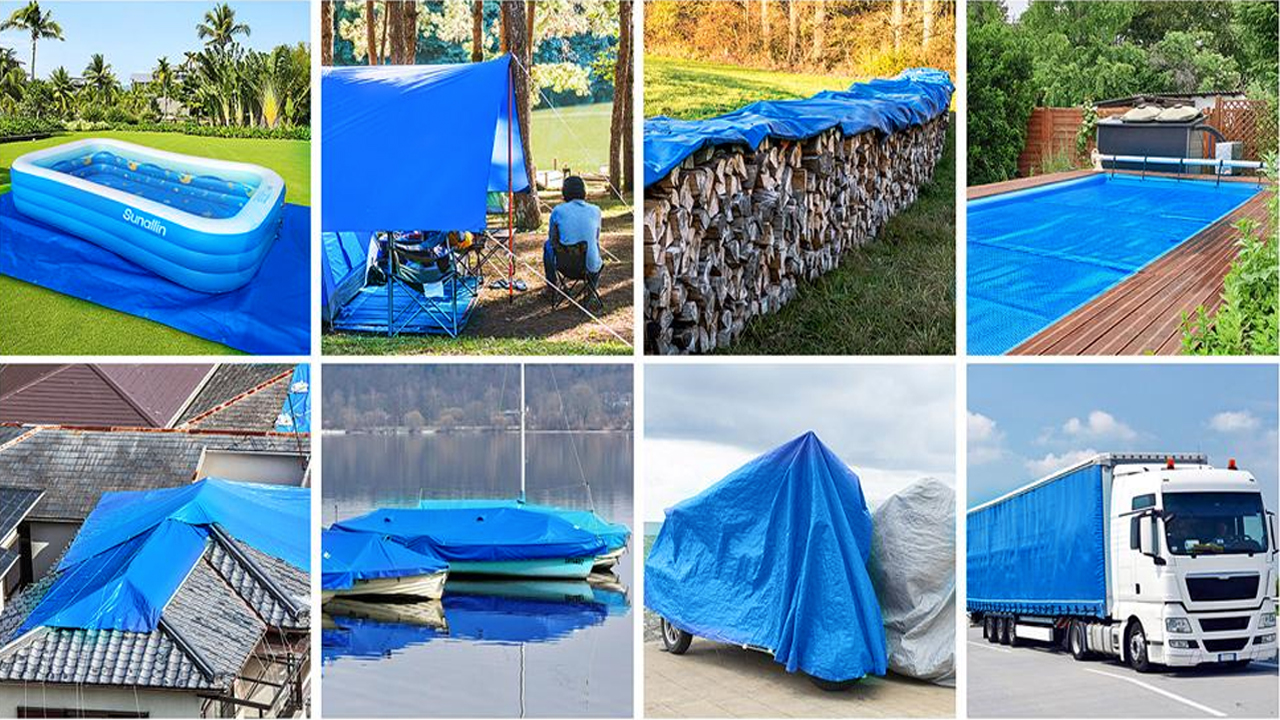
Choosing the right tarpaulin material can be crucial for various tasks, from protecting your belongings to creating a shelter. With so many options available, it's important to understand the differences between them. PVC tarpaulins are strong and waterproof, ideal for heavy-duty use. Polyethylene tarpaulins are lightweight and cost-effective, perfect for temporary covers. Canvas tarpaulins are breathable and eco-friendly, great for outdoor activities. This guide will help you decide which tarpaulins material best suits your needs, ensuring you get the most effective and durable solution for your specific application.
Understanding Different Types of Tarpaulins

PVC Tarpaulins
Pros:
- • Durable: Highly resistant to tears and abrasions, ensuring a long lifespan even in tough conditions.
- • Waterproof: Excellent for heavy-duty, outdoor use, preventing water penetration and protecting contents effectively.
- • UV Resistant: Protects against sun damage, making it ideal for prolonged outdoor exposure.
- • Versatile: Suitable for a variety of applications, including industrial, agricultural, and commercial uses.
Cons:
- • Heavy: More difficult to handle and transport compared to lighter tarpaulin options.
- • Cost: Generally more expensive than polyethylene and canvas tarpaulins, which might be a consideration for budget-conscious users.
Polyethylene Tarpaulins
Pros:
- • Lightweight: Easy to transport and install, making it a convenient option for quick setups and temporary uses.
- • Affordable: Generally cheaper than PVC and canvas tarpaulins, making it a cost-effective solution for many applications.
- • Waterproof: Provides reliable protection against rain, ensuring the covered items remain dry.
- • Flexible: Suitable for various uses, including temporary covers, camping, and emergency shelters.
Cons:
- • Less Durable: Prone to wear and tear over time, especially with frequent use or rough handling.
- • UV Sensitivity: Can degrade faster under prolonged sun exposure, which can reduce its lifespan and effectiveness.
Canvas Tarpaulins
Pros:
- • Breathable: Reduces condensation build-up, which can help prevent mold and mildew.
- • Eco-Friendly: Natural material that’s biodegradable, making it a more environmentally friendly option.
- • Durable: Long-lasting and robust for various applications, able to withstand rough conditions and repeated use.
- • Versatile: Ideal for outdoor activities, covering equipment, and use in artistic or decorative applications.
Cons:
- • Water Absorption: Not fully waterproof unless treated with a waterproof coating, which may require periodic reapplication.
- • Maintenance: Requires more care, including cleaning and proper storage to prevent mold and mildew. Canvas can also become heavier when wet, making it more cumbersome to handle.
Applications of Tarpaulins

Construction
Protection:
- • Tarpaulins are crucial for shielding materials and equipment from adverse weather conditions like rain, snow, and strong winds.
- • Examples: Protecting building materials such as cement, wood, and metal from moisture damage, which can weaken their integrity.
- • Extended Use: They also prevent costly delays by ensuring that work can continue regardless of weather conditions.
Covering:
- • They provide essential cover for scaffolding, incomplete structures, and exposed areas of a construction site.
- • Examples: Covering newly poured concrete to prevent cracking from temperature fluctuations, and protecting unfinished buildings.
- • Extended Use: Tarpaulins can also serve as temporary roofs, maintaining work progress in areas awaiting permanent installation.
Safety:
- • Using Tarpaulin Sheets can prevent debris from spreading, thus enhancing safety on construction sites by keeping the workspace clean and organized.
- • Examples: Containing dust, debris, and other hazards within designated areas to minimize the risk of accidents and injuries.
- • Extended Use: Creating designated walkways and barriers with tarpaulins can direct worker traffic and improve site safety.
Agriculture
Crop Protection:
- • PVC Tarpaulins safeguard crops from harsh weather conditions, pests, and animals, ensuring optimal growth and yield.
- • Examples: Covering fields during storms to protect against hail and heavy rain, and shielding crops from intense sunlight and frost.
- • Extended Use: Creating windbreaks to protect delicate plants from strong winds and prevent soil erosion.
Storage:
- • Polyethylene Tarpaulins are perfect for covering and protecting harvested crops, hay, and machinery, keeping them safe from moisture and decay.
- • Examples: Securing hay bales to prevent mold growth, and covering tractors and other farm equipment to protect against rust and weather damage.
- • Extended Use: Temporary storage solutions during peak harvest times when permanent storage facilities are full.
Greenhouses:
- • Canvas Tarpaulins can create temporary greenhouses, providing the necessary controlled environment for plant growth, especially in regions with unpredictable weather.
- • Examples: Setting up quick, adaptable greenhouses for seasonal crops, and using tarpaulins as shade cloths to regulate temperature and light levels.
- • Extended Use: Creating microclimates within larger greenhouses to cater to specific plant needs, enhancing crop diversity and yield.
Outdoor Events
Shelters:
- • Tarpaulins are ideal for setting up temporary shelters for outdoor events like fairs, concerts, and festivals, providing shade and protection for attendees.
- • Examples: Constructing canopies, tents, and pavilions that offer comfort and safety in various weather conditions.
- • Extended Use: Creating designated eating areas, first aid stations, and rest areas that are protected from the elements.
Ground Cover:
- • They help protect the ground and equipment from moisture and dirt, maintaining clean and safe areas for event activities.
- • Examples: Laying tarpaulins under stages, seating areas, and food stalls to prevent mud and wear on grass or other surfaces.
- • Extended Use: Providing clean and dry walkways for event participants, enhancing accessibility and comfort.
Weather Protection:
- • Tarpaulin Sheets offer protection against rain, sun, and wind, ensuring the comfort and safety of event participants.
- • Examples: Setting up windbreaks and rain covers to keep performance and audience areas dry, and using UV-resistant tarps to provide shade.
- • Extended Use: Creating enclosed spaces with tarpaulins for privacy and security, such as backstage areas and VIP sections.
Read more about tarpaulins Installation in our next blog: "How to Properly Install and Secure Tarpaulins
Conclusion
Choosing the right tarpaulin material is essential for ensuring effective protection and longevity across various applications. PVC Tarpaulins are ideal for heavy-duty tasks, offering superior durability and weather resistance, making them perfect for industrial and agricultural uses. Polyethylene Tarpaulins provide a lightweight and cost-effective solution, suitable for temporary covers and general-purpose use, particularly in agriculture and outdoor events. Canvas Tarpaulins offer breathability and eco-friendliness, making them an excellent choice for applications where condensation control and environmental impact are concerns, such as greenhouses and equipment covers.
When selecting tarpaulins in UAE, consider the specific needs of your project, including the material's durability, weight, cost, and environmental resistance. In the UAE, numerous Tarpaulin Manufacturers and Tarpaulin Suppliers offer a wide range of high-quality tarpaulin sheets tailored to meet diverse requirements. Investing in the right tarpaulin ensures maximum efficiency, safety, and longevity, providing reliable protection for construction, agriculture, and outdoor events.
